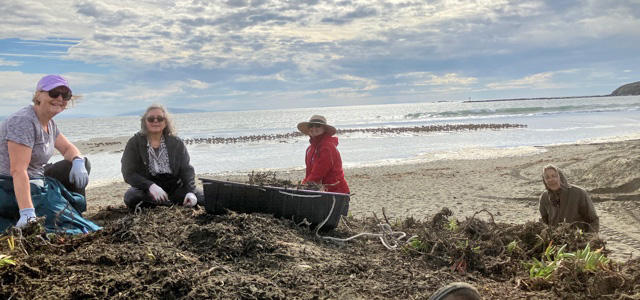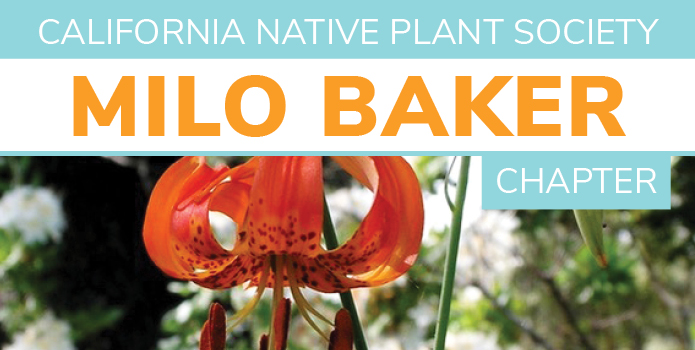 |
December/January NewsletterWhat's in this issue: Wreath-making Workshop, Speaker Series, Introducing our new Field Trip Chairperson, Growing Ferns of Northern California, Invasive Alert, Fall Scholarship Recipients, Doran Beach Restoration Project Update, Ongoing Volunteer Opportunities |
|
Wreath-making Workshop
|
|
Speaker Series
|
|
Happenings at the Milo Baker Chapter– Wendy Smit, Milo Baker Hospitality Co-Chair The Board continues to meet over Zoom and the last meeting in November was no exception. A new hospitality Co-Chair was elected and we welcome Celeste Murad. You will see her at the monthly meetings– say hello! We have a dynamite hospitality group now– Jack James and Karen Thompson focus on the technology of setup and Zoom; Liz Parsons, Wendy Smit, and Celeste focus on meeting room set-up and now Lynnette Bower is doing both! Erika Erzberger manages the book and t-shirt sales and Virginia continues to book excellent speakers! Thanks to everyone for pitching in. We also have a new Field Trip Chairperson, Lynn Houser. Lynn was a chapter president a few years ago and knows our county thoroughly. She will be planning a new season of plant walks. We talked about the results of the Fall Plant sale. Karen Thompson reported that the net profit was more than $18,500. A huge success, thanks to a wonderful crew but especially to Natasha Granoff who planned meetings, rounded up logistics, met with the Laguna Foundation, and even was part of propagation and pear testing. We much appreciate her taking on the management of this important sale for the chapter. Speaking of the nursery and more plant sales, Lynnette Bower has volunteered to chair the spring plant sale. She has also been working with Betty to co-manage the nursery. The Board elected her to be the Nursery Co-Chair. She and her husband Nick, along with chapter members and Laguna staff, have installed an extension and realignment of the greenhouse. This will allow the chapter to raise tender cuttings for the spring sale, and it will be shared with the Laguna Foundation. All of the potting mix used for our plants is steam-treated to kill any pathogens. Moving the greenhouse should make this process easier and more accessible. Also at the last Board meeting Michelle Halbur and the Committee presented the 5 candidates for this season’s scholarships. All were approved. Thanks to all the Committee! See the bios of two of the recipients below. The Milo Baker Chapter continues to be very active, all by volunteers. Visit our website to view other news and opportunities to join this fun group. And come to the Wreath-making workshop on December 5th! |
|
Introducing our new Field Trip Chairperson
Lynn is a past President and Conservation Chair for the Milo Baker Chapter and also served on the State CNPS Board for many years. She has a B.S. In Botany and has worked on the Santa Rosa Plain surveying rare vernal pool plants. She is a mother of two (ages 25 and 28) and loves nature education for all ages. She works as a Pharmacy Technician these days and wants to host Plant Walks to be able to spend more time outside, hiking and sharing the botanical treasures of Sonoma County, especially during the flower season. Lynn welcomes all to come out to see our native flora and also any suggestions for locations and leaders for next year. |
|
Growing Ferns of Northern California– Liz Parsons, Milo Baker Vice President The rain has awakened the polypody fern that is growing in my front yard. The Polypodium californicum has rhizomes that cling to a rock under a heritage Coast Live Oak (Quercus agrifolia). A sure sign that our rainy season has begun is the emergence of the polypodies on the hillsides. Polypody ferns are dormant all summer so they are a perfect choice for growing under an oak tree because they require no summer water. A variety called ‘Sara Lyman’ will be available at our spring sale. It has deeply cut pinnae that gives it a frilly look.
The Bay Area is home to many native ferns that are fine garden subjects. Once you find the right micro-climate for a fern, it will live happily for many years in that spot. Unfortunately, it isn’t easy to find ferns in nurseries. One exception to that is the sword fern, (Polystichum munitum). It is readily available and easy to grow. Sword ferns are very common in the coastal forest and under redwoods. Once established in a nice shady place, it is surprisingly drought tolerant. Growing from a crown, the individual fronds are a deep, glossy green and can be as long as four feet. The name sword fern refers to the pinnae (the primary divisions of the fern frond). The pinnae are long and narrow and near the main stem (the rachis); there is a triangular projection that makes it resemble a sword. The range of sword fern is along the coast from San Diego County to British Columbia. Woodwardia fimbriata, the giant chain fern, has a common name that refers to the linear sori (the spore-bearing structures) found on the back of the pinnae. Woodwardia grows from a crown, and in the spring has delightful large fiddleheads that resemble a shepherd’s crook. It can produce fronds up to six feet long. It is always found along streams or near seeps throughout California, except the Sierra Nevada. If you have a wet spot in your garden with plenty of space, this is the perfect choice. It is occasionally sold at our plant sale. Blechnum spicant (Struthiopteris spicant is the new name), deer fern, is evergreen and dimorphic, which means that it has two types of fronds, fertile and sterile. The narrow fertile fronds rise above the evergreen, leathery sterile fronds. The new growth has a wonderful rosy tone. Enrich the soil with a little peat for this acid-loving fern. Native to coastal areas, it will do well inland if it is kept well watered. It can be seen at the Kruse Rhododendron State Reserve and in coastal Oregon, where I have seen whole shady hillsides lined with deer fern. It is often available at our plant sale. The genus Adiantum, or maidenhair fern, contains the loveliest of ferns. They are easily recognized by fronds with shiny, black stems and graceful dancing pinnae. Five-finger fern (A. aleuticum and A. pedatum ) occur in coastal canyons where there is constant moisture. Given this growth habit, it is a pleasant surprise to find that it adapts very nicely to our gardens and does very well in a container. There will be some at our spring sale. Southern maidenhair, A. capillus-veneris, while found throughout the state, is more common in the south. It is readily available. In our local woods, we find the northern maidenhair (A. jordani). It is reliably summer dormant. Unfortunately, it is very difficult to find in nurseries. Enjoy it when you find it peeking out of the rocks as you hike the trails this rainy season. The pinnae are more fan-shaped than its southern relative. All the Adiantum spread by slowly creeping rhizomes and can occupy a nice patch in the shady garden. A good source for hardy ferns is Fancy Fronds, 1911 4th Avenue West, Seattle, WA 98119. This is a very good mail-order firm with a delightful catalog and good prices. A good reference book is Ferns and Fern Allies of California by Steve Grillos, UC Press, 1974. Another good book is Ferns for American Gardens by John Mickel. Macmillan Publishing Co, New York, 1994. |
|
Invasive Alert– Alynn Kjeldsen, Milo Baker Invasive Plant Co-chair
Senecio linearifolius, (Senecio linearifolius var linearifolius) also known as fireweed groundsel or linear-leaved Australian fireweed is on the move. At the recent California Invasive Plant Council Symposium, this plant was highlighted as a top Weed Alert. This plant has been known in San Diego and Orange Counties for many years, but in 2020 it turned up in Santa Clara County, and in 2022 was found in Marin and southern Mendocino County. According to the CDFA Pest Rating Proposal, this invasive is concerning because it has a high reproductive/dispersal rate; it could have a significant environmental impact such as lowering biodiversity, disrupting natural communities, or changing ecosystem processes; and it could impact threatened or endangered species by disrupting critical habitats. Please educate yourself about what this plant looks like and if you see it, be sure to post it on iNaturalist or Calflora website. |
|
Fall Scholarship RecipientsMilo Baker Fall Merit Scholarship recipient – Bob Schneider
Milo Baker Fall Merit Scholarship recipient – Amina Rand-McNeil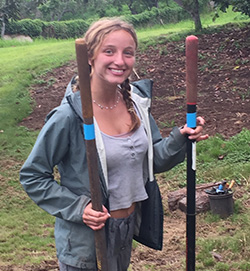 My name is Amina Rand-McNeil, I am 21 years old. I am studying Natural Resources Management at Santa Rosa Junior College. I am currently working towards an associate degree before transferring to a four-year university to get my bachelor's. I have worked in the Santa Rosa Junior College’s Wildfire Resilience Program where I learned how to identify many California native plants and applied that knowledge to hands-on field work of invasive species removal, and native plantings. I have always loved plants, and have experience in landscaping and permaculture design. However, my dream job is to work in restoration. The California Native Plant Society’s scholarship will help me focus on my education, and give me more free time to pursue extracurricular ways to get involved in the restoration community. I am living on my own as I go to school, which has proved to be difficult balancing work and school. With this extra money, I plan to study to get my firefighter 2 certificate, allowing me to work on prescribed burns, and taking me a step closer to my goals. I am very grateful to the California Native Plant Society for this scholarship, and I look forward to the opportunities that this has opened up for me. My name is Amina Rand-McNeil, I am 21 years old. I am studying Natural Resources Management at Santa Rosa Junior College. I am currently working towards an associate degree before transferring to a four-year university to get my bachelor's. I have worked in the Santa Rosa Junior College’s Wildfire Resilience Program where I learned how to identify many California native plants and applied that knowledge to hands-on field work of invasive species removal, and native plantings. I have always loved plants, and have experience in landscaping and permaculture design. However, my dream job is to work in restoration. The California Native Plant Society’s scholarship will help me focus on my education, and give me more free time to pursue extracurricular ways to get involved in the restoration community. I am living on my own as I go to school, which has proved to be difficult balancing work and school. With this extra money, I plan to study to get my firefighter 2 certificate, allowing me to work on prescribed burns, and taking me a step closer to my goals. I am very grateful to the California Native Plant Society for this scholarship, and I look forward to the opportunities that this has opened up for me. |
|
Doran Beach Restoration Project Update– Jan Lochner, Milo Baker Invasive Plant Co-chair The CNPS and Friends Invasive Crew have been working on a multi-agency restoration project at Doran Regional Park for the last couple of months. This project has included our crew removing approximately a half acre of ice plant and European beach grass. Sonoma County Maintenance crew assisted in some areas with a small tractor, but most of it came out with the strong will of our amazing crew. During this time of invasive plant removal, we have had the pleasure of hosting volunteers from the US Fish and Wildlife Service, and the Laguna Foundation. The next step in the restoration process will be planting natives that the Laguna Foundation has been growing. Sonoma County Natural Resources has obtained a grant to pay for the plants and they have organized the planting plan/supplies coordination. We will be planting over 2000 plants at Doran Beach Boardwalk on Wednesday, Nov. 29th weather permitting. Back up date is Wednesday, Dec. 13th. Folks from Regional Parks, Laguna Foundation, USFWS, and Bodega Marine Lab are planning on coming out for the planting. Everyone is invited. Starts at 9:30. Bring your favorite tool for sand planting small containers. Text Jan Lochner for more information at (707) 569-4724. |
|
Ongoing Volunteer OpportunitiesPhoto: Volunteers remove invasive ice plant at Doran Beach, credit: Jan Lochner Living Learning Landscapes Workday – second Friday of the month (9:30 am - noon). Meet at 1808 Albany Drive in Santa Rosa. Please RSVP to April Owens aprilleeowens@gmail.com so we know to expect you! Weekly Doran Beach Ice Plant Removal – every Wednesday (9:30 am - 11:30 am). Bring clippers and gloves and knee pads if you like. One of the most pleasant workdays happens every week – a trip to Doran Beach to pull ice plant. We are clearing out the ice plant that is in the marshland to make room for natives. It is very visual and quite satisfying, with the sound of the waves, birds and foghorn. To join us, please text Jan Lochner, (707) 569-4724, to let her know you are coming. Bodega Head Ice Plant Removal Project – second Sunday of each month (10:00 am - 1:00 pm). CNPS is leading volunteers at Bodega Head to save native species from getting smothered by ice plant. Meet at the main parking lot near the bathrooms. Bring water, clippers and gloves if you have them. Email Alynn at alynnkjeldsen@gmail.com for more information and to let us know that you are coming. For more information, please visit the Volunteer Opportunities page on our website. |
|
|
|
|
|
||||
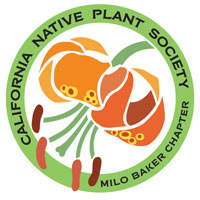 |
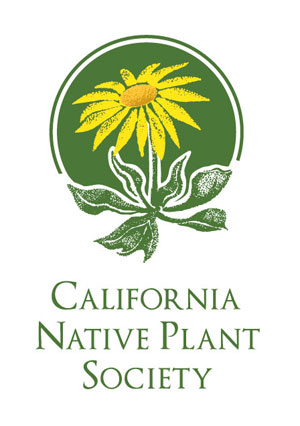 |
|
CNPS Statewide Website | Milo Baker CNPS Website |
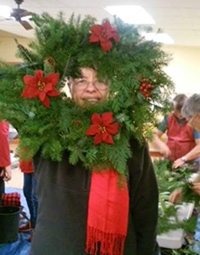 There will be no regular General Meeting in December. Instead, we will hold our annual wreath-making workshop on December 5th. This event is for members only. Liz Parsons will give a few simple instructions and you will discover how easy it is to make a spectacular wreath for your home.
There will be no regular General Meeting in December. Instead, we will hold our annual wreath-making workshop on December 5th. This event is for members only. Liz Parsons will give a few simple instructions and you will discover how easy it is to make a spectacular wreath for your home.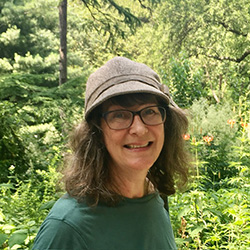 We are extremely fortunate to have such a qualified new Field Trip Chairperson. Please welcome Lynn Houser in her new role and look for more information on upcoming Plant Walks as they become available, in future newsletters and on
We are extremely fortunate to have such a qualified new Field Trip Chairperson. Please welcome Lynn Houser in her new role and look for more information on upcoming Plant Walks as they become available, in future newsletters and on 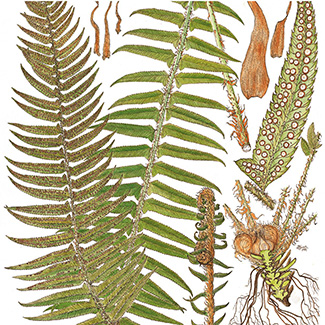 Sword Fern Ilustration by Linda Vorobik
Sword Fern Ilustration by Linda Vorobik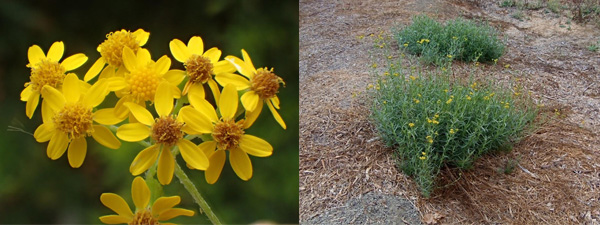
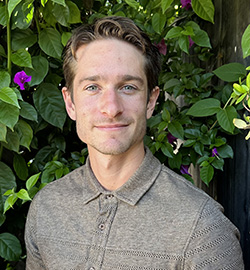 I am a landscape designer and contractor by trade, and a naturalist and amateur botanist by passion. I've worked in both residential landscaping and ecological restoration. These days, I work with the Sonoma Ecology Center, a conservation non-profit in Sonoma, CA, spearheading a regenerative landscaping program. My focus is on using local ecotype native plants in the built environment, while also responsibly utilizing stormwater, managing for invertebrate habitat, and following defensible space guidelines for fire safety. To better serve our community and grow my career in the native plant movement, I am pursuing continuing education with Santa Rosa Junior College in their Environmental Horticulture department. The generous scholarship I've received from CNPS Milo Baker Chapter will allow me to continue advancing my skill set in landscape design, construction, and horticulture, which in turn allows me to have a bigger and more positive impact in our community.
I am a landscape designer and contractor by trade, and a naturalist and amateur botanist by passion. I've worked in both residential landscaping and ecological restoration. These days, I work with the Sonoma Ecology Center, a conservation non-profit in Sonoma, CA, spearheading a regenerative landscaping program. My focus is on using local ecotype native plants in the built environment, while also responsibly utilizing stormwater, managing for invertebrate habitat, and following defensible space guidelines for fire safety. To better serve our community and grow my career in the native plant movement, I am pursuing continuing education with Santa Rosa Junior College in their Environmental Horticulture department. The generous scholarship I've received from CNPS Milo Baker Chapter will allow me to continue advancing my skill set in landscape design, construction, and horticulture, which in turn allows me to have a bigger and more positive impact in our community.